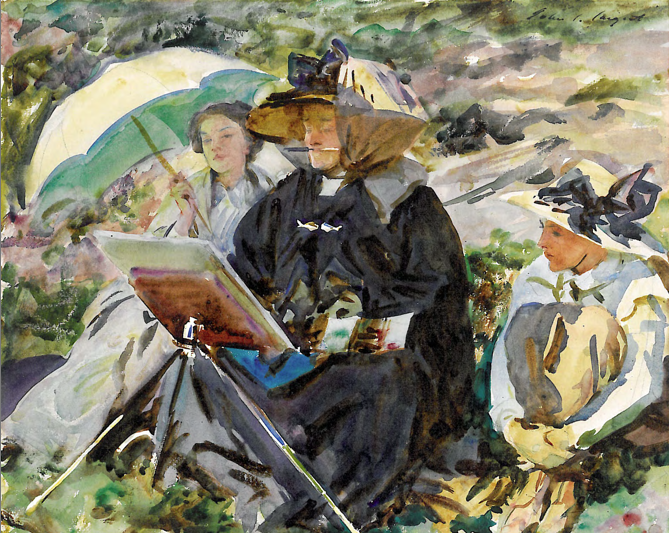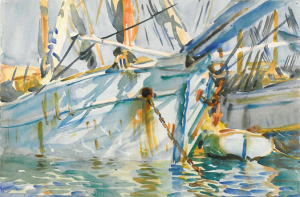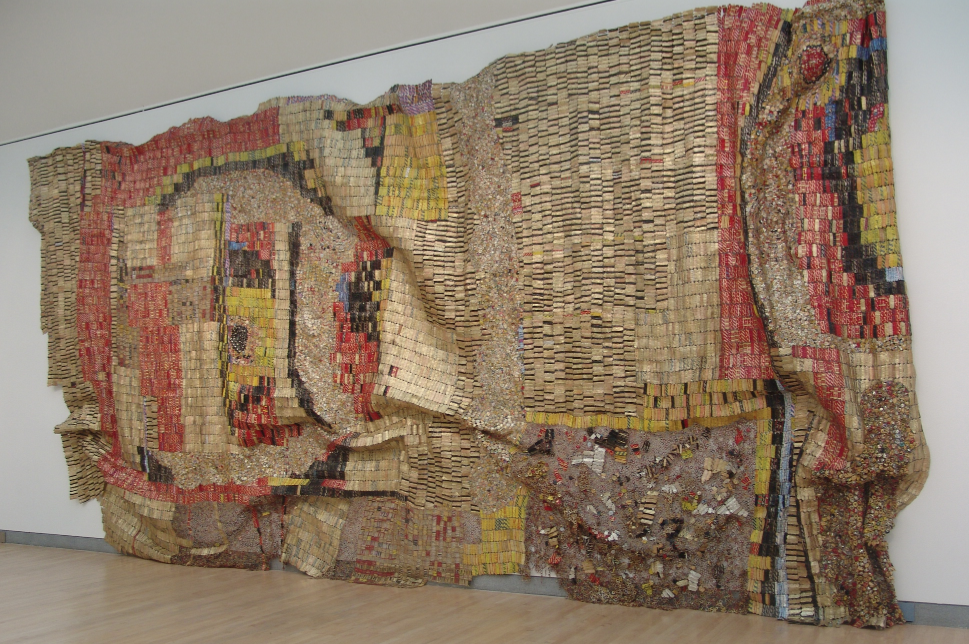
June means graduations, often out of state for Alaskans. Back in my kids’ former bedrooms, the ones I want to convert into a Vegas extravaganza, summer also means one more attempt to beg my out-of-town children to please let me mail them their junk. I’ve got tennis trophies and those ubiquitous elementary award certificates; there was a time I drooled over receiving them. Heck, I even have beer steins and booze jiggers from fraternity brawls, plus enough tee shirts to form a chain clear to Times Square.
Some parents give ultimata and throw out love letters from that high school romance, that forever soul-mate which lasted ’til the final bell signaled the end of the school year. I hint to pitch or pack when my kids come home. I usually get, “I’ll get to it, mom!” Then a fabulous week of late night movie watching ensues, with all the salty cheese and chips I’m not supposed to eat. And just as Cinderella’s coach turned into that pumpkin, husband Dave and I are waving good-bye to one of our darlings. We peer through the TSA fencing in order to catch our prodigy for one last glance as they confidently stride, ticket in hand, having re-laced their shoes.
Alas, we return to our empty nest with bedrooms still full of athletic pom-poms and stale chocolate welded to the wilting rose from that special someone, now forgotten. So, this June I got gutsy and packed up pounds of hair scrunchies and tap dancing slippers and mailed them to my final college graduate. I assured Maddy, newly nestled into her studio apartment in Astoria, New York, that there must be a Goodwill nearby. I imagined these charitable recyclers couldn’t wait for her outgrown prom dresses and packs of bobby pins. Well, nothing got mailed back to me and no rude remarks were texted, so my courage grew.
I sent a lobster pull-toy, bought decades ago on a Maine vacation, and a bicycle, to my recent LA law grad, Oliver, rationalizing that his out-of-date two-wheeler from sixth grade might bring him wealth on eBay. I even sweetened the deal by offering him a bike rack for his HHR, payment for allowing me to mail his eight scrapbooks, filled with menus from greasy diners across America.
Having scored while enriching UPS, Dave and I headed to New York for NYU’s graduation or, I should explain, our daughter’s faux commencement. Maddy, our drama-queen who played Annie in a West High production, was now Brandi, a spoiled teen in an original Off-off Broadway play, A Cautionary Tail. Written by Christopher Peña and directed by Benjamin Kamine, …Tail is about the perils of high school society. Mean-girls act out on Facebook, the new feeding ground for callow youth narcs, while overbearing parents repeat generational mistakes.
It was raining sideways when we got off the bus at Grand Central. Precipitation not letting up, we caved and brought umbrellas, feeling like we were Two Years Before the Mast, as we navigated our bumbershoots downwind to the Flea Theater. There we sat on uncomfortable chairs in a blackened basement and watched Maddy morph into Brandi. Going to see her perform is like watching our granddaughter, Averyl, at karate. We get nervous which is why we bought tickets for several …Tail shows. The second time I’d calmed down enough to notice the dark forest, made of stretched lycra and actors who gyrated while adhered to bathing suit-esque fabric. The scene seemed to represent angst from the inner sanctum of a teen’s mind, a sort of dramatized Oedipus complex.
Off-off Broadway, which was once Off-Broadway, is where actors get training to hopefully move up the Great White Way. Being a thespian involves juggling jobs and appeasing novice playwrights and directors. Off-off productions are a great way to absorb the theatrics of Manhattan. You’re sitting right on drama’s fifty yard line interacting with actors during intermission. In between acts of A Cautionary Tail, a cast member sang karaoke while attendees formed friendships around a cash bar.
Because Maddy was in a professional play with last minute costume and lighting debacles, she had to miss her Tisch/NYU graduation. The last episode of The Cosby Show, entitled “And so we Commence” is about Dr. Huxtable’s son, Theo and his NYU graduation. The sitcom centers around the hassles of congregating for this mammoth event. True, Maddy’s performance was worth missing Pomp and Circumstance at Yankee Stadium. Still, we were sad not to be part of the festivities.
So we sucked it up and headed for Maddy’s turquoise and Ikea-furnished studio in Astoria, a few subway stops from Times Square. Astoria, named for John Jacob Astor, the entrepreneur who over-harvested mammals for the fashion trade, is a community of ethnicities and jogging yuppies, resembling Berlin or Chicago. After seeing that all the junk I’d mailed had happily morphed into Maddy’s urban décor, we all headed for lunch at Bareburger, which serves sandwiches and salads on recycled kitchenware–brownie pans become mainstream dinnerware. Tourists can people watch while ordering the edible equivalent of a ‘build-a-bear’ burger. Diners may choose buttermilk fried chicken on a brioche bun while adding Wisconsin blue cheese to fire roasted red peppers and smoked paprika mayo, absorbing Gotham beyond the pushcarts of pretzels that define mid-town Manhattan.
It was time to find an art venue and the best was at the Brooklyn Museum. BMA is another short subway ride from Midtown and although it competes with Manhattan’s museum trifecta: Metropolitan, Guggenheim, and MoMA, lately it’s been packing a mean punch, and a nice lunch too. Dave and I chose grilled chicken paninis which we ate in the sculpture courtyard. The museum has collected remnants of former landmarks, rescuing pillars and statuary; the evidence of nineteenth century industrialism can still be pondered over tea and a cookie.

An exhibition of John Singer Sargent Watercolors was eye candy as blues and greens still saturate his paper, contrasting with earth tones and the occasional dabs of red, sparkling jewels even after a hundred years. And peering through the hues are his sketch lines, providing a connection to the master. Sargent’s elegant ladies wear netted bonnets as they bask in sunshine or paint, ironically copying Sargent’s approach to landscape. How they climbed those rocks wearing pounds of clothing is left to the imagination of twenty-first century viewers, as are those couples coyly cuddling.
Sargent could paint anything, as noted in his seafaring compositions where canvas sails soften wooden boats which lap up reflections from the water. In other works, water flows around pebbly streams while fountains and statuary seem animated. Boy, could that guy paint atmospheric heat and extreme sunlight by greatly diluting pigments, diminishing contrasting values and letting the white paper speak.
On another floor was Gravity and Grace: Monumental Works by contemporary Nigerian artist El Anatsui. To segue, Sargent worked alone, man versus easel, producing compositions on canvas or paper. Even though he probably got help with scaffolding when executing murals, it was Sargent against the bare walls or ceilings.
In contrast, Anatsui works in a Collective-format. His studio assistants manipulate recycled materials while he orchestrates the progress of assemblages in a fashion similar to Seattle glasswork maestro Dale Chihuly. Unlike Sargent, Anatsui remains anonymous as the African workers who weave and twist the found metals; no signatures or brush marks adorn pieces. The absence of the artist/author makes the work Post-modern.

Anatsui, a retired professor at the University of Nigeria, says his art reflects “issues of both local and pan-African identity.” Initially inspired by block-patterned symbols that illustrate proverbs on Akan funerary cloth, Anatsui’s work gained internationally after his crew began wiring together discarded liquor bottle caps. One interest is the history of the liquor trade, linking Africa to Europe and the Americas. Also working with tin and aluminum objects, Anatsui creates new forms that, “straddle the boundary between sculpture and painting.” He uses the phrases, nomadic aesthetic and nonfixed form, to express themes about the worldwide circulation of materials and ideas that can change shape and also interpretations.
Upon entering the Brooklyn’s Anatsui exhibition, giant wall hangings made from the discards of the rum, brandy, gin and whisky trade exquisitely undulate, as if weightless. On the gallery floors lids from food tins have been wired, creating metal fabric shaped into sculptural landscaping that will change formation when placed in a new venue. Somewhat unusual, Anatsui allows museum curators to hang his work and arrange his floor pieces at will. Categorized as Post-modern, these metallic tapestries allow viewers to find personal meanings; however, I found traces of the Avant-garde in both the wall hangings and the sculptures.

The abstracted colors and flattened designs resemble a Klimt abstract, while the floor sculptures mimic an Andy Goldsworthy earthwork. One can ponder that Collective-art-making does have subjectivity like other Modernists who worked alone. In the end, it is El Anatsui who goes to the gallery openings, signature or not, and will be canonized like Sargent.
John Singer Sargent Watercolors (BMA until July 28, travels to The Boston Museum of Fine Arts October 13 to January 20). Gravity and Grace, Monumental Works by El Anatsui (BMA until August 4). More information about the above artists, the play A Cautionary Tail (The Flea Theater, 44 White Street in lower Manhattan until July 23) and Bareburger can be Googled. Catalogs are available on Amazon.




